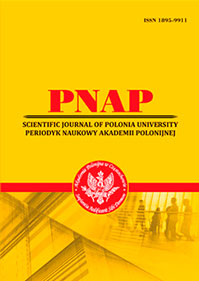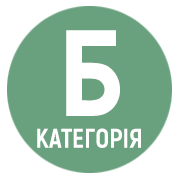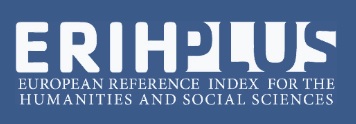ENGLISH LANGUAGE TERMINOLOGICAL UNITS WITH THE SEMANTICS OF MIGRATION FROM OCCUPIED TERRITORIES IN MEDIA DISCOURSE
Abstract
The article examines the discourse of migration as a multi-level object of linguistic analysis, which is formed at the intersection of socio-legal, political and communicative levels. Special attention is paid to the REFUGEE concept as a key unit that simultaneously implements legal, cognitive and linguistic functions. Within the framework of the study, the object is the terminological units denoting the phenomena of migration from the occupied territories of Ukraine, which combine special and general linguistic meaning and function in media discourse. The source base was English-language explanatory and terminological dictionaries, as well as a corpus of media texts that reflect modern international and migration issues.The methodological basis of the study is the provisions of terminology, cognitive linguistics and discourse analysis. Approaches to the terminological unit classification by structural and word-formation characteristics (root, derivative, composite, word combinations and abbreviations) were involved.It was established that the terminology of the migration sphere is characterized by a high level of variability and openness to interdisciplinary borrowings (legal, military, social vocabulary). Specific lexical and semantic features were identified, including metaphorical models (migration flow), medical and threat conceptualizations (migration epidemic, demographic stability), as well as euphemistic nominations (temporarily displaced persons).The scientific novelty of the work lies in the combination of terminological analysis with a cognitive-discursive approach, which allows us to trace how the ambivalence of public consciousness regarding migration processes is reflected in language. The results of the study deepen the understanding of the structural and semantic organization of the migration from temporarily occupied territories terminology, determine the mechanisms of its word- formation productivity, and outline the trends in the development of linguistic practices in the context of the Russian Federation’s military aggression against Ukraine as well as the globalized information space.
References
2. Гриців Н.М., Сабан О.В. Особливості перекладу англомовних термінів перекладознавчого спрямування українською мовою. Нова філологія, 2024. (96), 47–55. https://doi.org/ 10.26661/2414-1135-2024-96-6.
3. Кияк Т.Р. Форма і зміст мовного знака. Вісник Харківського національного університету ім. В.Н. Каразіна. Харків : Константа, 2004. № 635. С. 75–78.
4. Пальчевська О.С., Губич П.В. Гуманітарне розмінування в Україні: Комунікація, термінологія, словник. Львівський філологічний часопис. № 3, 2018. С. 197–200.
5. Симоненко Л.О. Українська термінографія: стан і перспективи. Мовознавство. 2014. № 4. С. 28–35.
6. Чайка О., Остапенко Я. Новітній погляд на поняття «термін» у лінгвістиці. Філологічний часопис, 2020. (2), с. 103–110.
7. Biel Łucja, Doczekalska Agnieszka 2020: How do supranational terms transfer into national legal systems? A corpus-informed study of EU English terminology in consumer protection directives and UK, Irish and Maltese transposing acts. Terminology, 26(2), 184–212. URL: https://doi.org/10.1075/term.00050.bie.
8. Court services. 2025. URL: https://services.courts.ie/Family-Law/arrangements-for-children/access.
9. Britannica (2025). URL: https://www.britannica.com.
10. Cambridge Dictionary, 2025. URL: https://dictionary.cambridge.org/.
11. Capdevila P., Stott I., Beger M., Salgue- ro-Gómez R. Towards a comparative framework of demographic resilience. Trends Ecol. Evol. 2020, 35, 776–786.
12. Convention relating to the Status of Refugees. 1954. https://www.un.org/en/genocideprevention/documents/atrocity-crimes/Doc.23_convention%20refugees.pdf
13. Glossary on Migration. Geneva : International Organization for Migration, 2019. 248 p.
14. Oxford Learners Dictionaries. 2025. URL: https://www.oxfordlearnersdictionaries.com/.
15. Picht H., Gotti M. Modern Approaches to Ter- minological Theories and Applications. Bern; Berlin; Bruxelles; Frankfurt; New York; Oxford; Wien, 2008. 434 p.
16. Radio Free Europe (2025). URL: https://www.rferl.org.
17. Russia invaded Ukraine. 2025. URL: https://war.ukraine.ua/articles/the-illegal-deportation-of-ukrainian-children-is-a-crime-organized-and-financed-by-russian-officials/.
18. Schoemaker Hans. “Allegations of Russian Weaponized Migration Against the EU with the Blackest Intention?”, Militaire Spectator 188, No. 7/8 (2019): 364. URL: https://www.mil-itairespectator.nl/thema/internationale-veilig-heidspolitiek/artikel/allegations-russian-weap-onized-migration-against-eu.
19. UNHCR: The UN Refugee Agency. 2025. URL: https://emergency.unhcr.org/protection/legal-framework/idp-definition.
20. van Dijk T.A. Principles of critical discourse analysis. Discourse and Society, 1993. 4(2), 259–283.
21. Wiktionary. 2025. URL: https://en.wiktionary.org/.

This work is licensed under a Creative Commons Attribution 4.0 International License.
 ISSN
ISSN 


.png)




